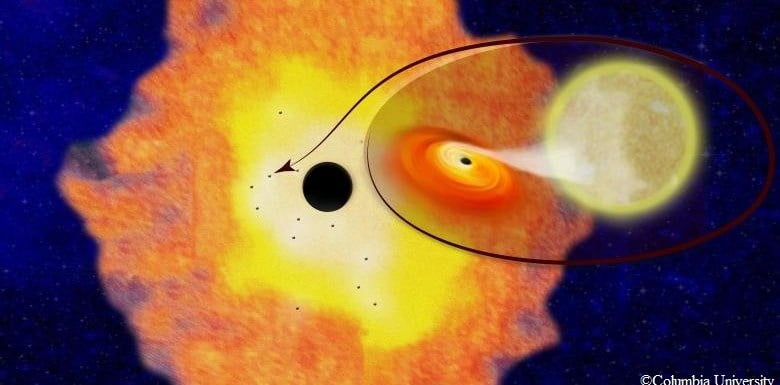
New York’s Columbia University astrophysicists detected tens of thousands black holes crowded together around Sagittarius A*, the titanic black hole in the heart of the Milky Way.
The importance of the discovery is very big since more than 20 years now, researchers have made failed attempts to find evidence to support their idea that thousands of black holes encircle super large black holes at the center of large galaxies.
“Everything you’d ever want to learn about the way big black holes interact with little black holes, you can learn by studying this distribution,” said Columbia Astrophysicist Chuck Hailey, co-director of the Columbia Astrophysics Lab and lead author on the study.
Hailey also added that our whole galaxy holds over five dozen already-known black holes. They are 100,000 light-years wide.
Moreover, according to him, there are 10,000 to 20,000 in an area only six light-years wide that no one is able to find.
Hailey’s crew employed data from the Chandra X-ray Observatory. They looked for X-ray marks of black hole-low mass binaries in their latent condition. In brief, they found 12 within three light years, of Sagittarius A*.
The researchers examined these features and dimensional distribution of the distinguished binary systems.
They deduced their observations which led to a revolutionary conclusion that there are around 300 to 500 black hole-low mass binaries and around 10,000 isolated black holes in the region of Sagittarius A*.
“This finding confirms a major theory and the implications are many,” stated Hailey.
He also added how this discovery is an important advance step for the gravitational wave research.
Knowing the number of black holes in the heart of a famous galaxy can help for a better prediction of how many gravitational wave events may link with them.
“All the information astrophysicists need is at the center of the galaxy.”
This research is part of the April 5 issue of Nature.









